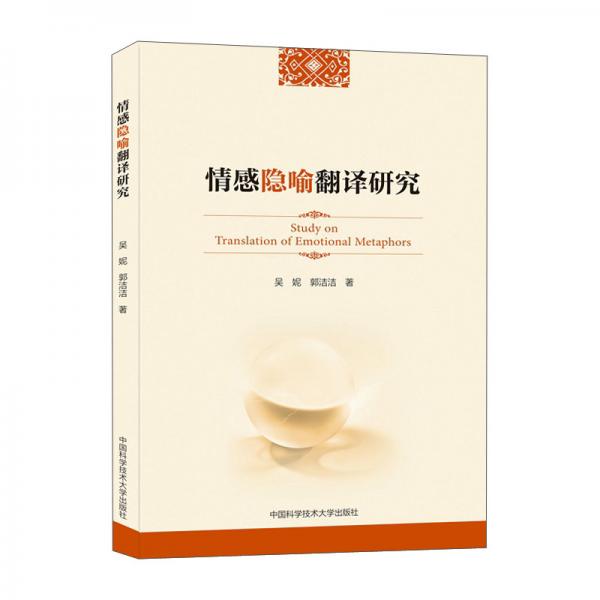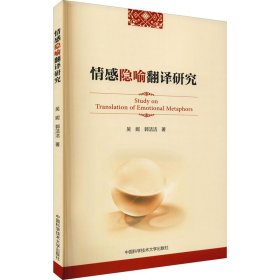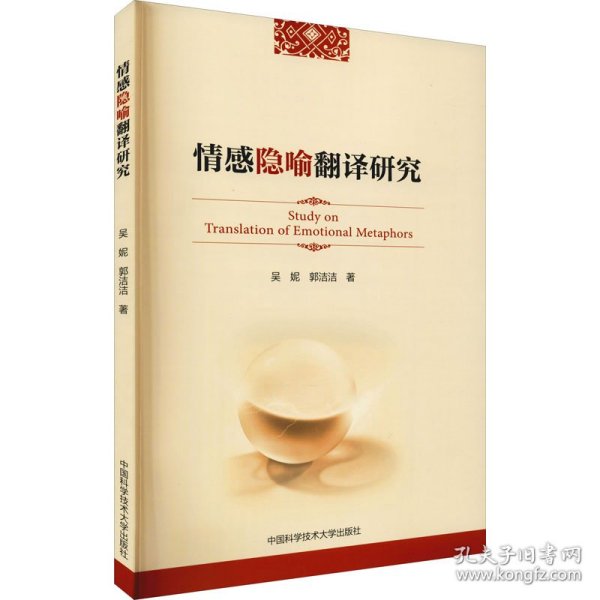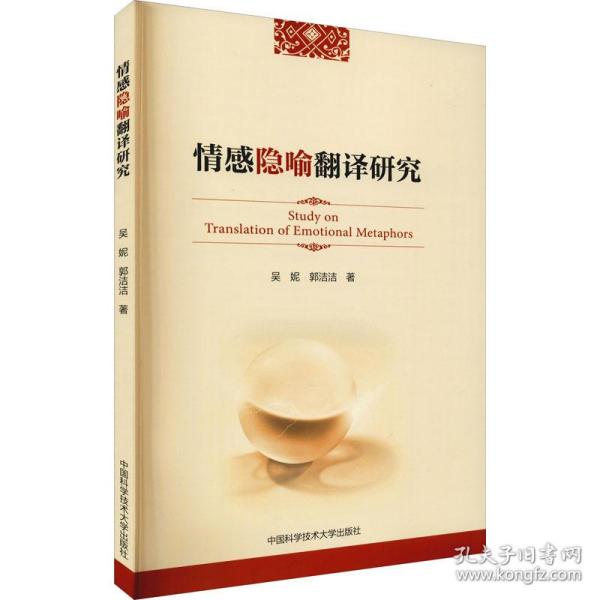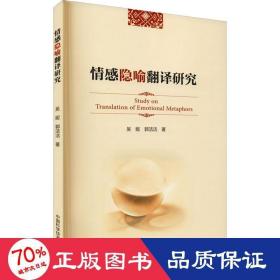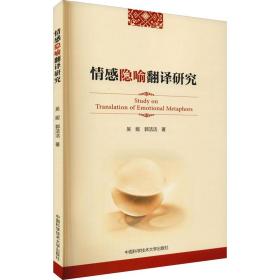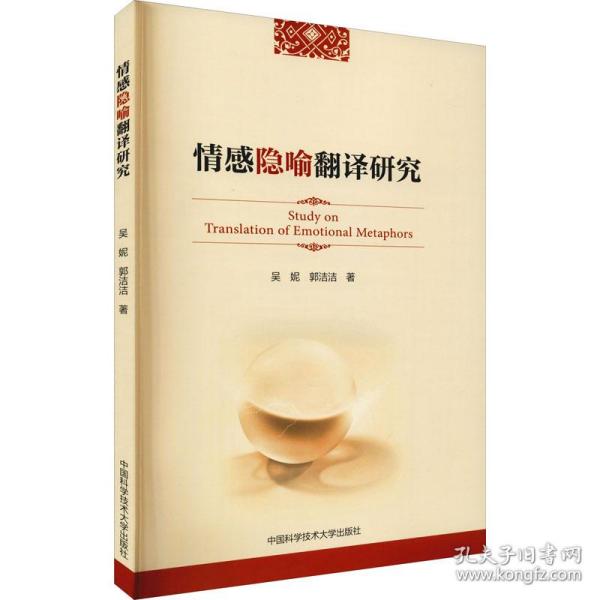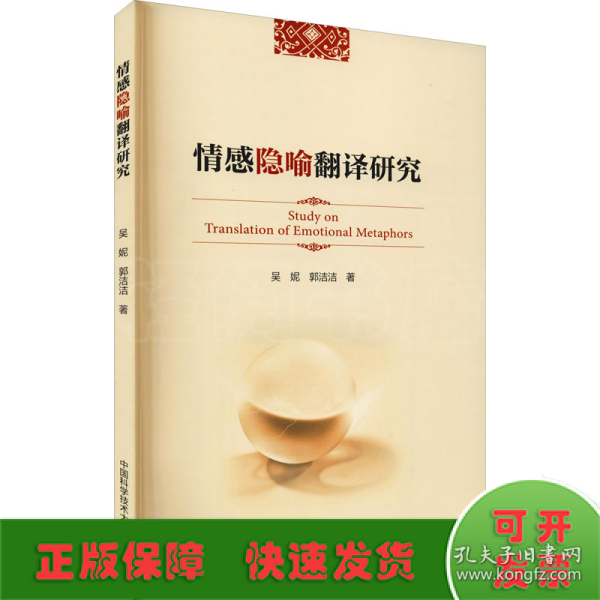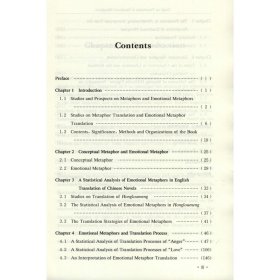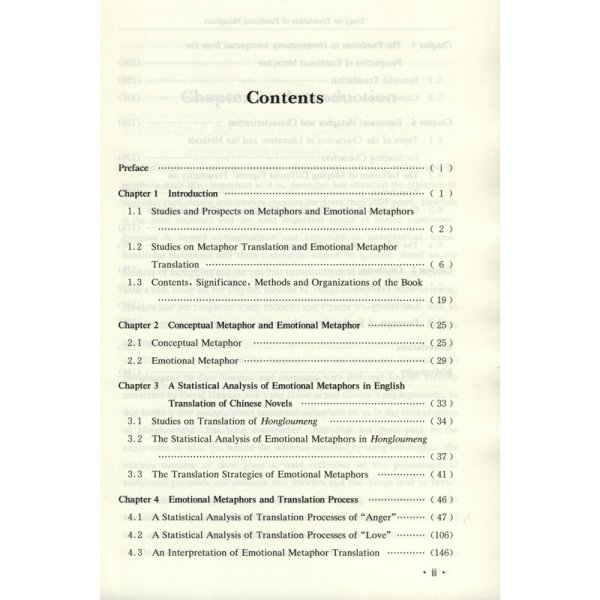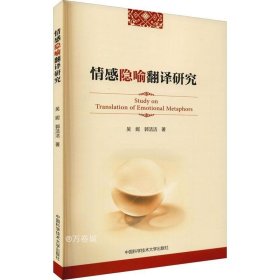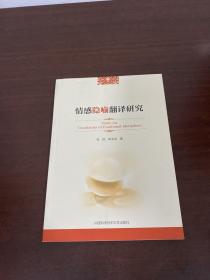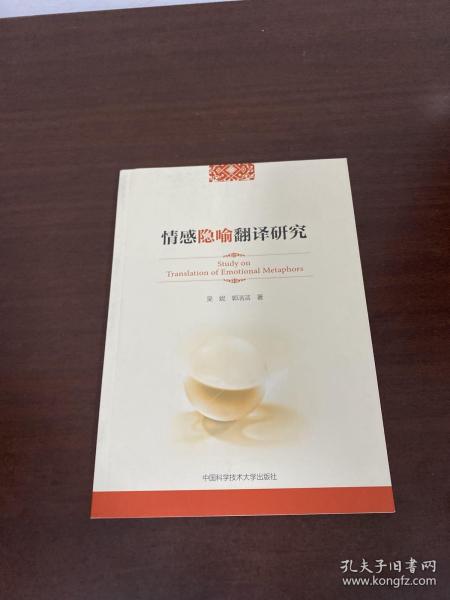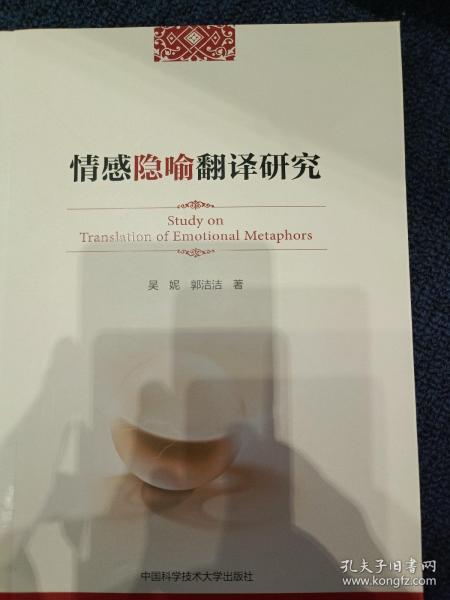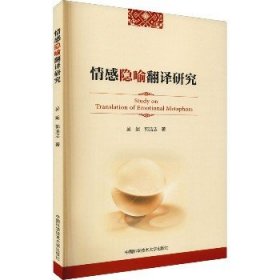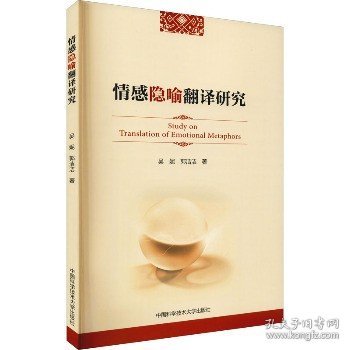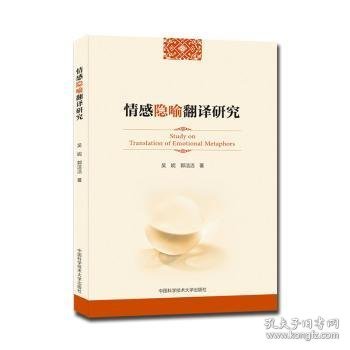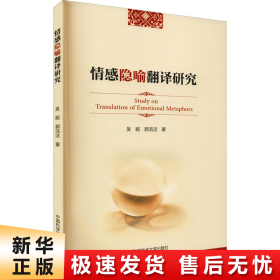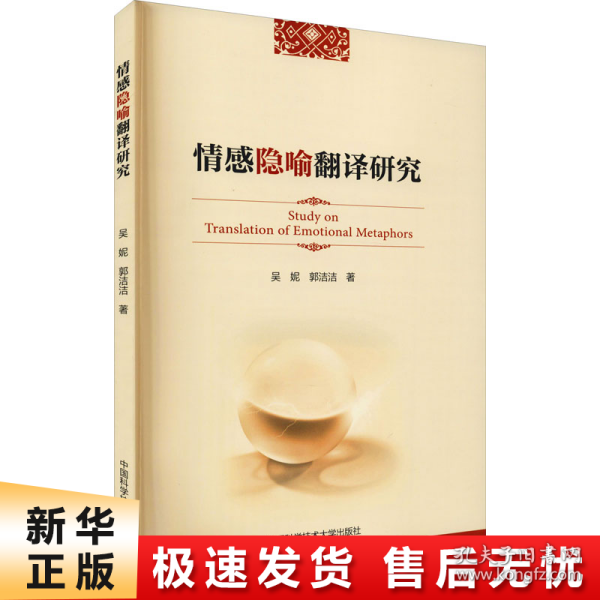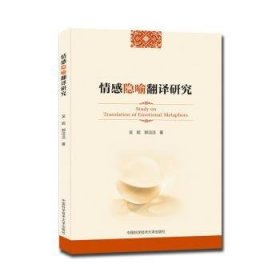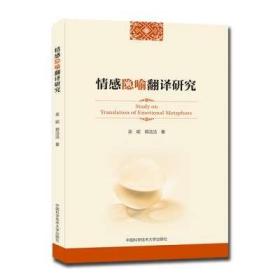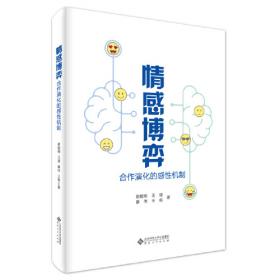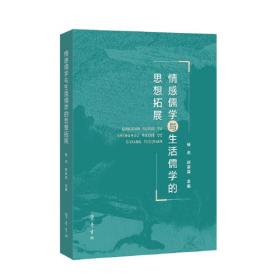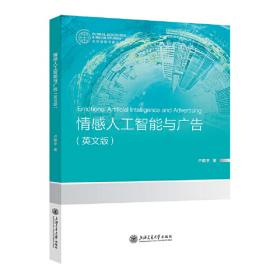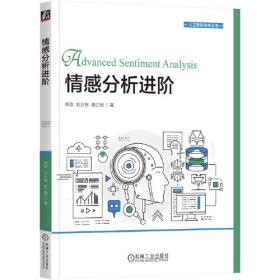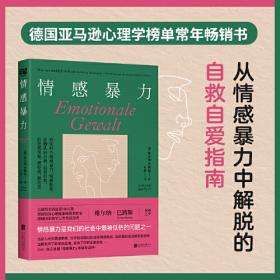情感隐喻翻译研究
出版时间:
2021-08
ISBN:
9787312047411
定价:
68.00
装帧:
平装
开本:
16开
纸张:
胶版纸
3人买过
-
《情感隐喻翻译研究》从认知语言学的视角,以Lakoff的概念隐喻理论和Kvecses的情感隐喻理论为基础,从结构、方位、本体情感隐喻三种情感隐喻认知模式出发,采用定性与定量相结合的研究方法,选取《红楼梦》及其两个英文全译本(大卫・霍克斯的译本和杨宪益、戴乃迭夫妇的译本)中的“生气”和“爱情”两种情感隐喻进行对比研究,分析两个译本中的翻译方法和翻译过程,并探讨情感隐喻视域下《红楼梦》中女性主义翻译、情感隐喻与性格塑造的关系,总结小说中情感隐喻翻译的一般规律,阐释翻译理据和制约情感隐喻翻译的一些因素。《情感隐喻翻译研究》可供高等院校及研究机构外语专业的教师、研究人员以及学生阅读参考。 Preface
1 Introduction
1.1 Studies and Prospects on Metaphors and Emotional Metaphors
1.2 Studies on Metaphor Translation and Emotional Metaphor Translation
1.3 Contents, Significance, Methods and Organizations of the Book
2 Conceptual Metaphor and Emotional Metaphor
2.1 Conceptual Metaphor
2.2 Emotional MetaphorChapter 3A Statistical Analysis of Emotional Metaphors in English
3 Translation of Chinese Novels
3.1 Studies on Translation of Hongloumeng
3.2 The Statistical Analysis of Emotional Metaphors in Hongloumeng
3.3 The Translation Strategies of Emotional MetaphorsChapter
4 Emotional Metaphors and Translation Process
4.1 A Statistical Analysis of Translation Processes of “Anger”
4.2 A Statistical Analysis of Translation Processes of “Love”
4.3 An Interpretation of Emotional Metaphor TranslationChapter
5 The Feminism in Hongloumeng Interpreted from the Perspective of Emotional Metaphor
5.1 Feminist Translation
5.2 Classifications of Emotional Metaphor in HongloumengChapter
6 Emotional Metaphor and Characterization
6.1 Types of the Characters in Literature and the Methods for Shaping Characters
6.2 The Influence of Shaping Different Figures’ Personality on Translation
6.3 Correlations Between Emotional Metaphor and Characterization
6.4 The Effect of Shaping CharactersChapter
7 Conclusion
7.1 Major Findings
7.2 Limitations
7.3 Prospects of Further ResearchAbbreviationsBibliography
-
内容简介:
《情感隐喻翻译研究》从认知语言学的视角,以Lakoff的概念隐喻理论和Kvecses的情感隐喻理论为基础,从结构、方位、本体情感隐喻三种情感隐喻认知模式出发,采用定性与定量相结合的研究方法,选取《红楼梦》及其两个英文全译本(大卫・霍克斯的译本和杨宪益、戴乃迭夫妇的译本)中的“生气”和“爱情”两种情感隐喻进行对比研究,分析两个译本中的翻译方法和翻译过程,并探讨情感隐喻视域下《红楼梦》中女性主义翻译、情感隐喻与性格塑造的关系,总结小说中情感隐喻翻译的一般规律,阐释翻译理据和制约情感隐喻翻译的一些因素。《情感隐喻翻译研究》可供高等院校及研究机构外语专业的教师、研究人员以及学生阅读参考。
-
目录:
Preface
1 Introduction
1.1 Studies and Prospects on Metaphors and Emotional Metaphors
1.2 Studies on Metaphor Translation and Emotional Metaphor Translation
1.3 Contents, Significance, Methods and Organizations of the Book
2 Conceptual Metaphor and Emotional Metaphor
2.1 Conceptual Metaphor
2.2 Emotional MetaphorChapter 3A Statistical Analysis of Emotional Metaphors in English
3 Translation of Chinese Novels
3.1 Studies on Translation of Hongloumeng
3.2 The Statistical Analysis of Emotional Metaphors in Hongloumeng
3.3 The Translation Strategies of Emotional MetaphorsChapter
4 Emotional Metaphors and Translation Process
4.1 A Statistical Analysis of Translation Processes of “Anger”
4.2 A Statistical Analysis of Translation Processes of “Love”
4.3 An Interpretation of Emotional Metaphor TranslationChapter
5 The Feminism in Hongloumeng Interpreted from the Perspective of Emotional Metaphor
5.1 Feminist Translation
5.2 Classifications of Emotional Metaphor in HongloumengChapter
6 Emotional Metaphor and Characterization
6.1 Types of the Characters in Literature and the Methods for Shaping Characters
6.2 The Influence of Shaping Different Figures’ Personality on Translation
6.3 Correlations Between Emotional Metaphor and Characterization
6.4 The Effect of Shaping CharactersChapter
7 Conclusion
7.1 Major Findings
7.2 Limitations
7.3 Prospects of Further ResearchAbbreviationsBibliography
查看详情
-
全新
天津市西青区
平均发货14小时
成功完成率90.21%
-
全新
广东省广州市
平均发货25小时
成功完成率80.11%
-
情感隐喻翻译研究
重要提醒:::重要提醒::所有图书保证正版,按书名发货图片仅供参考, 有疑问请咨询客服,看清书名按书名发货
全新
北京市通州区
平均发货9小时
成功完成率89.31%
-
全新
江苏省苏州市
平均发货9小时
成功完成率95.6%
-
全新
北京市丰台区
平均发货8小时
成功完成率90.43%
-
全新
山东省济宁市
平均发货67小时
成功完成率81.11%
-
全新
四川省成都市
平均发货9小时
成功完成率96.93%
-
全新
江苏省无锡市
平均发货10小时
成功完成率93.25%
-
全新
北京市丰台区
平均发货23小时
成功完成率88.41%
-
全新
北京市西城区
平均发货29小时
成功完成率90.45%
-
全新
天津市河东区
平均发货28小时
成功完成率90.51%
-
全新
北京市朝阳区
平均发货9小时
成功完成率96.83%
-
全新
江苏省无锡市
平均发货18小时
成功完成率92.78%
-
全新
北京市顺义区
平均发货15小时
成功完成率93.88%
-
全新
江苏省无锡市
平均发货18小时
成功完成率94.49%
-
全新
江苏省南京市
平均发货15小时
成功完成率82.96%
-
全新
江苏省南京市
平均发货7小时
成功完成率98.12%
-
全新
河北省保定市
平均发货15小时
成功完成率91.25%
-
全新
北京市东城区
平均发货29小时
成功完成率84.95%
-
全新
江苏省无锡市
平均发货8小时
成功完成率95.79%
-
九品
北京市昌平区
平均发货22小时
成功完成率94.58%
-
九五品
天津市河西区
平均发货27小时
成功完成率87.63%
-
全新
广东省广州市
平均发货17小时
成功完成率88.63%
-
全新
广东省广州市
平均发货18小时
成功完成率86.52%
-
全新
北京市朝阳区
平均发货13小时
成功完成率93.49%
-
全新
广东省广州市
平均发货7小时
成功完成率89.33%
-
全新
北京市丰台区
平均发货21小时
成功完成率81.4%
-
九五品
北京市东城区
平均发货11小时
成功完成率82.86%
-
全新
广东省广州市
平均发货9小时
成功完成率87.11%
-
全新
江苏省无锡市
平均发货7小时
成功完成率89.16%
-
全新
山东省泰安市
平均发货13小时
成功完成率92.11%
-
九五品
北京市海淀区
平均发货24小时
成功完成率65.56%

 占位居中
占位居中

